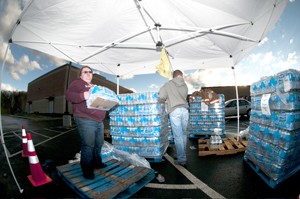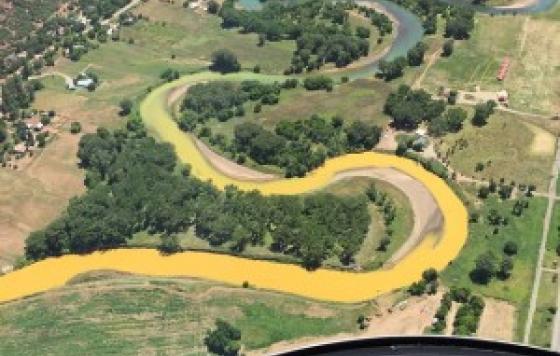
By Lynn Thorp, National Campaigns Director - Follow Lynn on Twitter (@LTCWA)
The referenced media source is missing and needs to be re-embedded.
One year ago today we learned that a chemical spill into the Elk River in West Virginia had led to a “Do Not Use” order. Hundreds of thousands of people in the Charleston area could not use their tap water for anything other than toilet flushing and fire fighting. As the crisis continued, details came to light. Over 10,000 gallons spilled. A coal-processing chemical called crude MCHM that no one had ever heard of. Freedom Industries managing a tank farm very badly. A lack of health effects or other information on the chemical. Wait, more chemicals involved! And the water smells like licorice, even when it’s at really low levels or almost gone. Investigations commence. Lawsuits are filed. State and federal hearings are held. Big Clean Water Act charges are filed against Freedom Industries. The list goes on and on.
So what have we learned? Could this happen again?
The are long odds against a criminally-run tank farm letting over 10,000 gallons of crude MCHM leak out of a tank and through secondary containment into the ground, then flow into a river just upstream and at the perfect depth to go directly into the intake for a Public Water System serving hundreds of thousands of people. But we still haven’t improved federal protections against chemical spills. See our February 2014 testimony for the Senate Environment and Public Works Committee for ideas on that.
As for other drinking water disruptions, who could have known a year ago that 2014 would be the year not only of the West Virginia drinking water disruption but of the February Duke Energy coal ash spill into the Dan River in North Carolina. This one threatened drinking water sources in North Carolina and Virginia. Then in August, hundreds of people in Toledo experienced a tap water crisis when cyanotoxins were found in the water system at levels of concern. As we pointed out in testimony before the House Energy and Commerce Committee in November, we can’t solve the cyanotoxin problem by focusing only on the drinking water treatment plant. As with all threats to drinking water, we need to look upstream and reduce the nutrient (or nitrogen and phosphorous) pollution that encourages the Harmful Algal Blooms which produce cyanotoxins.
We have learned that we need to act more aggressively to assess threats to drinking water sources and to eliminate those threats where we can and plan for the unexpected where we can’t. Clean Water Action worked with the Source Water Collaborative, a diverse group of organizations including water utilities, government at all levels and other to create A Call to Action: A Recommitment to Assessing and Protecting Sources of Drinking Water.
We have learned that all of our activities create contamination risks for drinking water sources and that removing that contamination after it’s in our drinking water is the most expensive and most short-sighted way of solving this problem. We have learned that of the tens of thousands of chemicals in use in our world, we have complete health effects data on very few of them and often we don’t even have laboratory methods to find them in water. We need better health and laboratory science, but we need to think about ways to avoid creating contaminants in the first place.
Clean Water Action talks about “Putting Drinking Water First,” by which we mean thinking about all of our activities with an eye toward their impact on our drinking water. As we marked the 40th anniversary of the Safe Drinking Water Act in December, we had much to celebrate and a year of experiences confirming that solving drinking water problems before they start is the only smart solution.
In case you missed it, this week Clean Water Action released reports exposing problems in Safe Drinking Water Act programs meant to protect underground sources of drinking water from activities associated with oil and gas drilling. Read more here.
Related Posts
Stay Informed
Get the latest updates and actions:
Thanks for signing up!
There was a problem processing your signup. Please try again.


